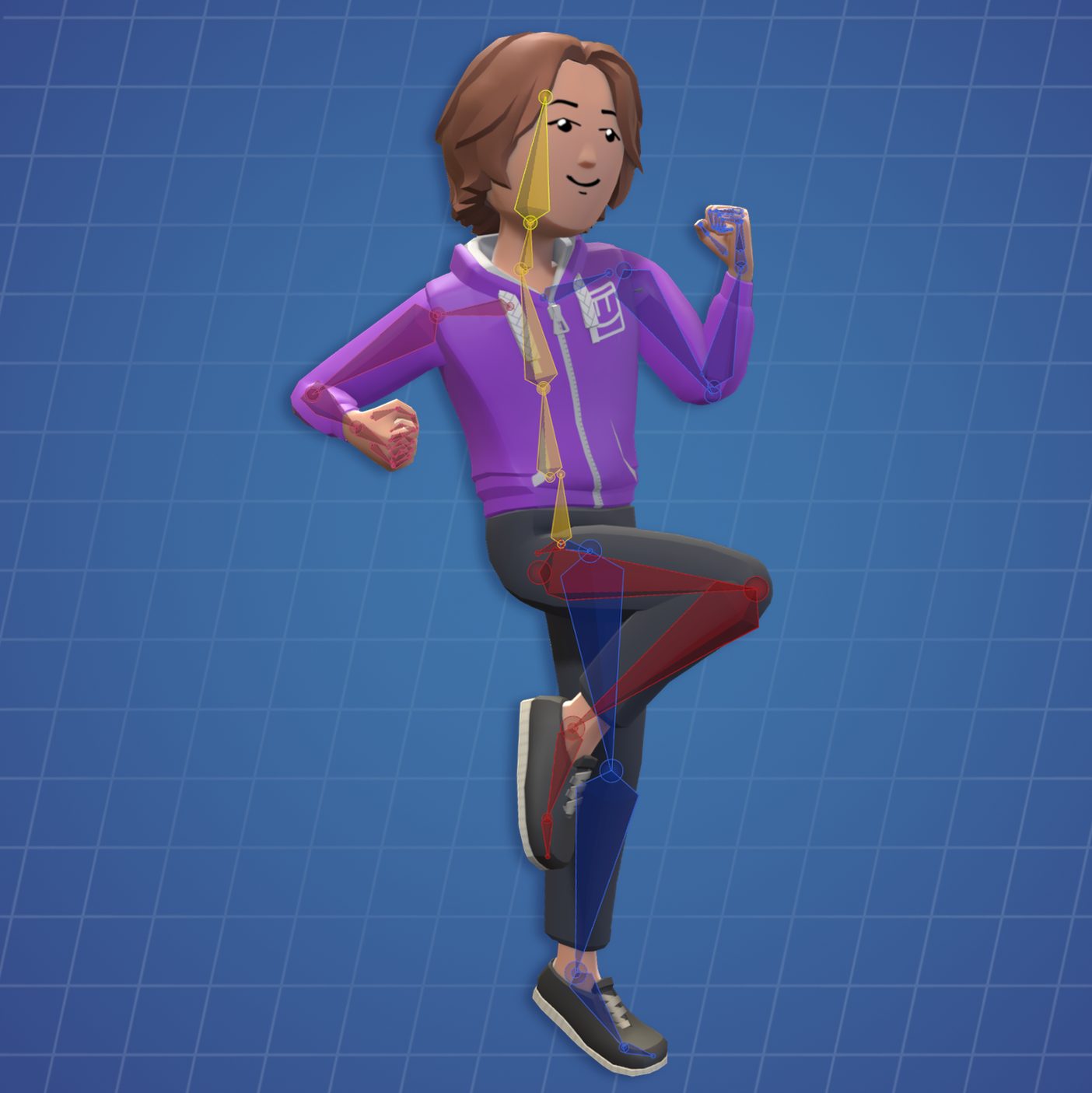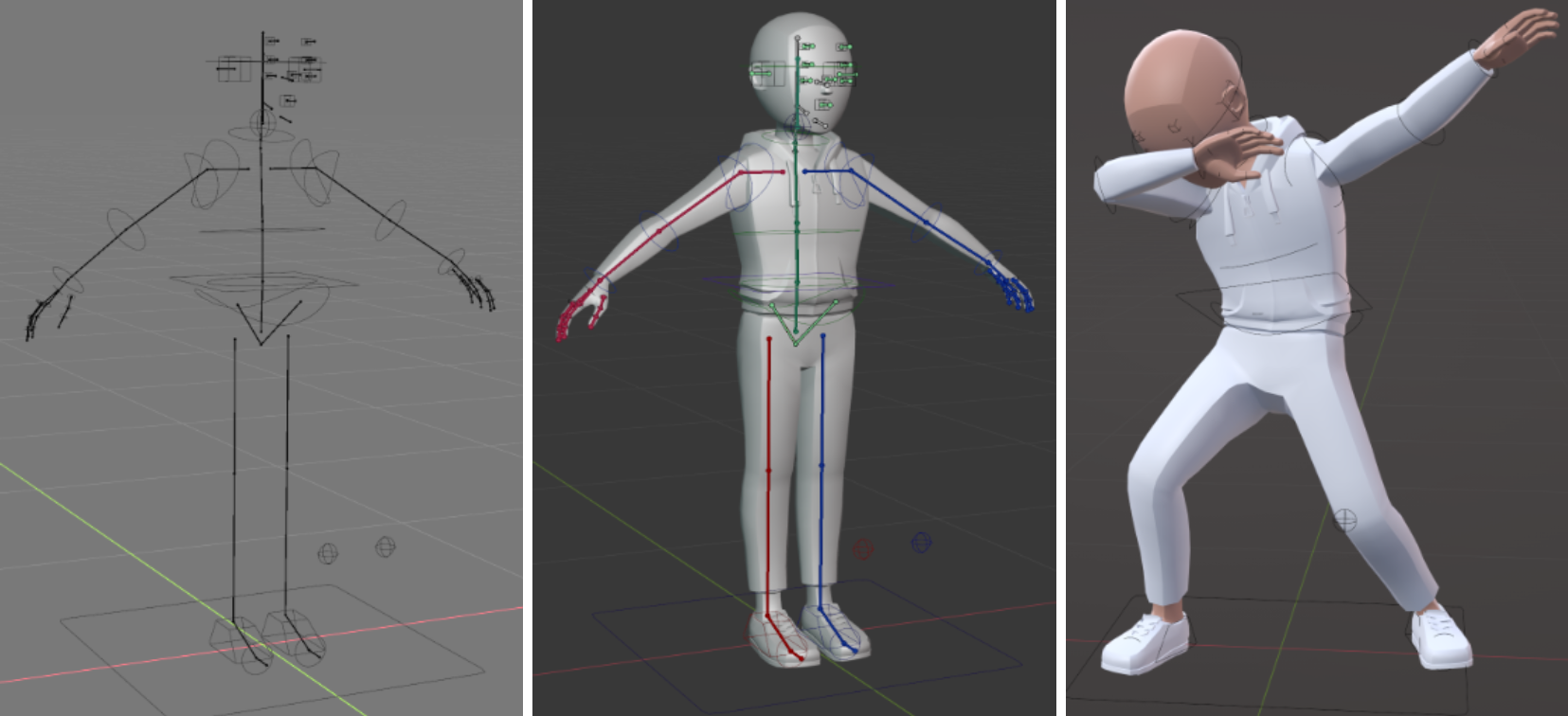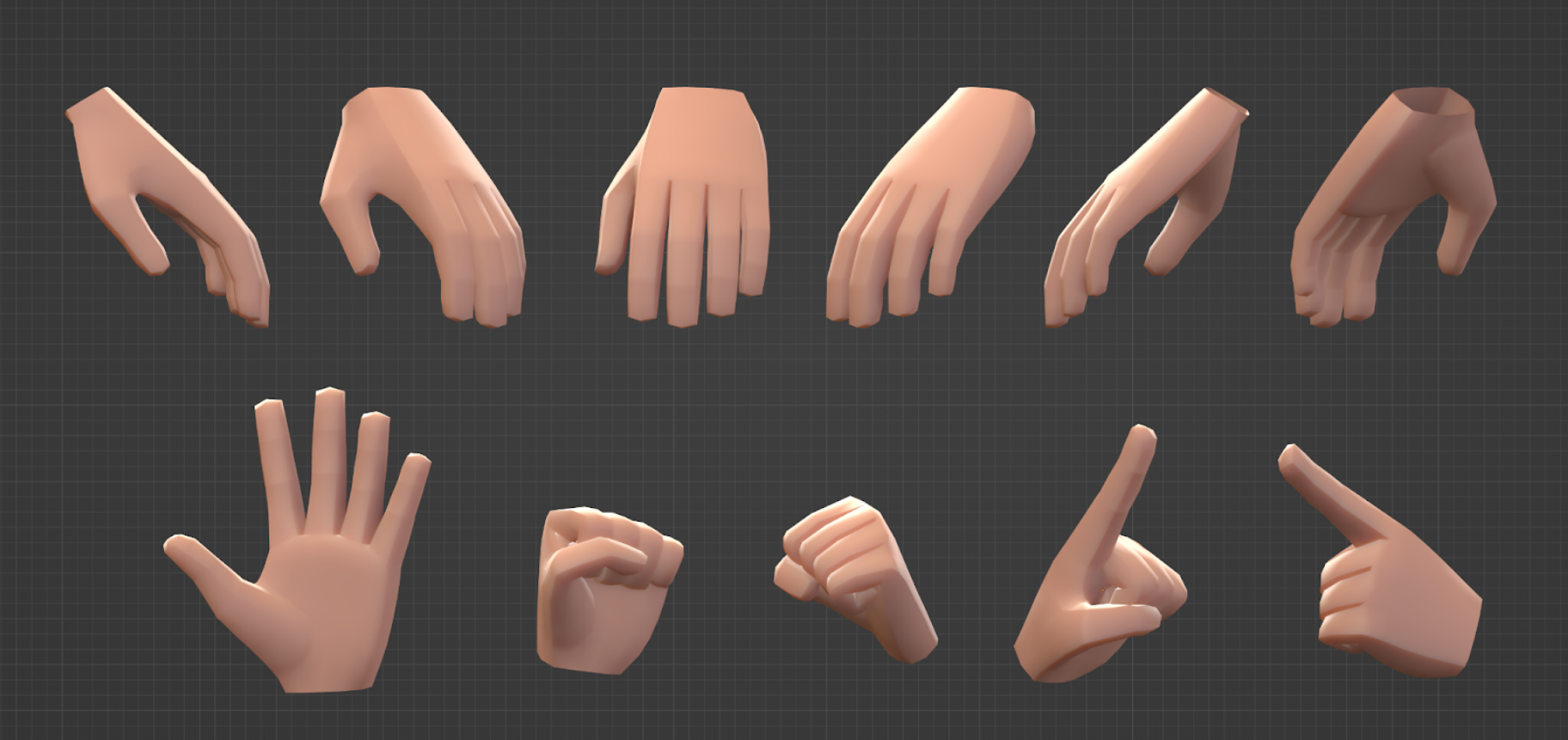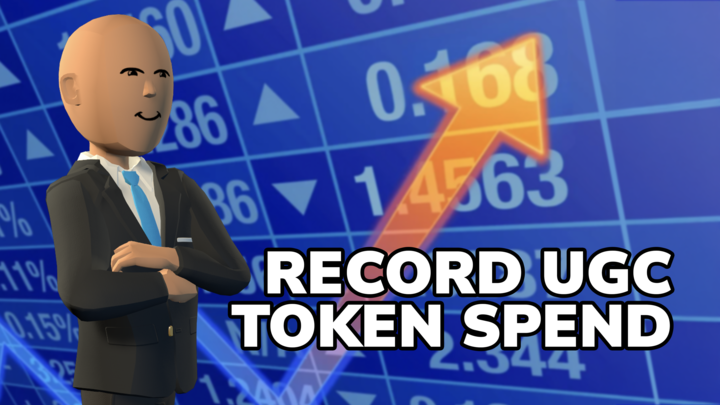Welcome to the third dev blog about the next evolution of Rec Room avatars. In the last blogs we talked about the optional full-body avatar and how clothes will work with it. Here we’ll look at another benefit you’ll get with the full-body option - enhanced embodiment leading to greater self expression. The new avatar system sets us up for full-body and finger tracking, but even if you don’t have tracking capabilities, seeing an avatar that looks and moves more like you is a real boost to immersion.
A concept image showing a peek inside the full-body option while it’s being controlled by a player with full-body tracking.
What makes the avatar move?
First, let’s take a high-level look at the bits inside the avatar that enable you to bring it to life.
The avatar has a skeleton that defines its base form, how all the pieces are linked together, and ultimately how it can move. Then there’s the model which goes over the skeleton and defines the shape of the avatar that we see. The skeleton and model come together to define how you look when you move.
Lastly, we add animations to make the avatar seem alive when you’re idle, and keep the movements smooth and understandable while you’re active. There’s lots of tweaking and tuning done at each layer to make sure the avatar’s body doesn’t fold or bend in weird ways as you move around.
From left to right, the underlying skeleton, the skin and clothing we layer on top, and the animations that make it move.
Yeah, but how do I make the avatar move?
With a basic VR setup the inverse-kinematics system (IK) will place your elbows and shoulders in specific locations based on the position of your headset and controllers. This is the same tech we use when you wear a full-body costume currently. Guessing where your arms are by the location of your head and hands is a hard problem. We’ll iterate on how to make the upper body animation look good, but if you want the most accurate representation of how you’re moving - that’s where full-body tracking comes in. With SteamVR’s full-body tracking tech you’ll be able to tap into more of this IK system to position your full-body avatar’s elbows, chest, hips, knees, and feet!
For finger tracking, we’ll be adding support for the newest Meta Quest headsets. Point 👉, give a peace sign ✌, throw the horns 🤘…and your avatar will do the same. Maybe at some point you’ll be able to ditch the controllers altogether.
We’re hoping to have support for full-body tracking when we launch the full-body option later this year, but bear with us if it comes out a bit after the initial launch. Finger tracking will take us a little longer, but we’ll get there.
Work-in-progress hand model
How do you blend animations and my movement?
Without tracking, your movements will be responsible for the full-body avatar’s upper body (head, shoulders, arms) while avatar animations are responsible for the pose of their lower body (hips, legs, feet). This is because in VR we don't actually know where your legs and feet are located so we have to rely on an artist's interpretation - since we do know where your head and hands are, we try to pose your avatar to respect your real VR pose.
However, if you're using full-body tracking then we’ll know where your legs and feet are - so we can dynamically switch between using avatar animations and VR tracking information to pose your lower body depending on the situation.
While you're running around we'll continue to play animations on your legs - despite the fact your real legs aren't actually moving - so that you appear to be running to other players in Rec Room. Once you stop walking in-game we'll blend back to showing your real leg positions so that you can dance and pose however you like.
Okay, it’ll move like me but will it look like me?
Just like with the current floating bean avatar, the full-body option will let you adjust the shape of your body. But instead of just a few options, you’ll be able to set the individual sizes and shapes of lots of different body parts - enabling near-infinite possibilities. With these new settings you’ll be able to create a more accurate (or idealized) depiction of yourself to embody. The settings we’re currently discussing include the ability to adjust: your height, the length of your torso, the width of your shoulders, belly, and hips, and the thickness of your arms and legs. We’ll have several options to adjust your face as well, but we’ll go into them further in a future blog.
A mockup of what the body adjustment settings might look like.
What’s next?
Speaking of that future blog, we’ve heard a lot of feedback from you on the eyebrows and noses of the full-body option, so we’re dedicating the next blog in the series to the face. We’ll talk about the evolution of facial features, show off some of the options you’ll get to pick from to customize your face, and talk about the changes we’ve made based on your feedback.







